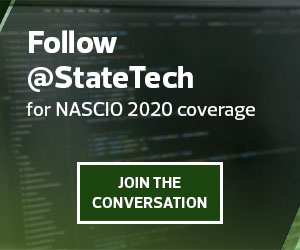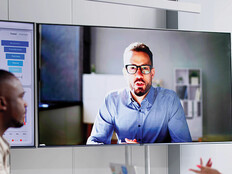STATETECH: How has Nebraska approached telework and having government workers stay at home?
TONER: We never really had a work-at-home order. Nebraska did an orderly, phased approach. Of course, right when the epidemic came out, we encouraged anyone that was in those vulnerable categories to work from home. So, that was phase one. We did more of a Midwestern, common-sense approach. Then phase two was to go ahead and have more people go work at home, which was about 25 percent. And how we did that was the criticality of whether we needed them at work or whether they could have just as easily worked at home. In our office, it was the developers and the support folks for the servers and databases and things of that sort.
That was in early, early April. Then, we ended up with another 25 percent going remote probably weekly after that. So, by mid-April, we really had probably 90 percent of our workforce working from home.
It depended really on the agency. There were some agencies that could more easily work at home, but we didn’t have this mass exodus. If we were going to do this again, this is exactly how we would do it. Get those that are at a higher risk home and make sure that they are functional. And do it in waves versus everyone rushing home.
STATETECH: You have had a continuity of operations plan in place — with a COOP scorecard for different agencies — for a while, for a variety of different contingencies. How did you put that into effect when these waves were going on?
TONER: The fact that we had one in place was a huge asset. We knew which agencies were going to need a little extra help. From their scores, I could tell whether or not they were able to work from home or they needed a location to work from. And we made sure that we did everything we could to help those folks out. Now, one of the things that I think we did right was that we did not increase our network capacity. We did not increase our VPN server capacity. We didn’t have to increase the number of multifactor authentications. We had enough for the entire state. So, we were well-prepared. We didn’t rush out and buy anything. We didn’t go out and add servers to anything. We were well-designed.
We took something from my private sector days: Like during my time at First Data, we knew that we had to have no interruption of service with the pandemic. We needed to make sure we were available 100 percent of the time, and we were. We knew we had capacity, we knew we had everything working and working well. We were one of the few states where our unemployment system did not get overloaded.
In Nebraska, we did a hard freeze on changes because that’s where you’re going to have problems. If you introduce a change, 99.9 percent of your problems come from software changes. We didn’t do any software changes. We didn’t push any new code into production — and we still haven’t, we’re still under that lockdown now. What we did was patching and things like that. But we did freeze all noncritical upgrades to make sure that we did not have a single interruption of service. We haven’t had a single interruption of service, not a single failure anywhere.













